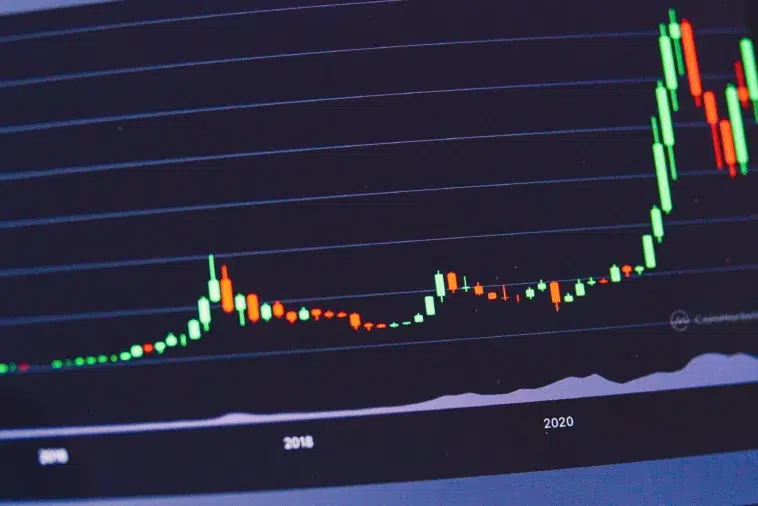Welcome to the fast-paced and ever-evolving realm of stock trading, where every decision counts and the dynamics of the market are in constant flux. In this blog post, we embark on a journey to demystify a critical aspect of trading: market sentiment analysis. By delving into the nuances of this powerful tool, we aim to equip traders with the knowledge and insights needed to stay ahead in the stock market game.
In the high-stakes world of stock trading, understanding market sentiment is not merely an advantage—it’s a necessity. Market sentiment, often an intricate interplay of emotions, breaking news, and the ever-churning cauldron of social media, can wield tremendous influence over stock prices. It’s the unseen force that can propel stocks to new heights or send them plummeting with breathtaking speed.
Section 1: Understanding Market Sentiment
In the intricate tapestry of stock trading, understanding market sentiment is akin to deciphering a hidden language—a language that, when mastered, can unlock a world of opportunities. Here, we take our first steps toward unravelling this captivating mystery.
Defining Market Sentiment:
Market sentiment, in its essence, is the collective emotional state of investors and traders as they navigate the financial markets. It’s the composite of optimism and pessimism, confidence and fear, that shapes the trajectory of stock prices. Whether stocks soar to new heights or plummet to unforeseen lows, market sentiment often plays a pivotal role in steering their course.
Why is understanding this sentiment so crucial? Because, my friends, it is the invisible hand that can either catapult your investments to soaring success or lead them down a treacherous path. Every buy and sell decision, every market trend, is fundamentally tied to the prevailing sentiment.
The Role of Emotions, News, and Social Media:
To truly grasp the concept of market sentiment, one must appreciate the potent trio of emotions, news, and social media that constantly shape and reshape it.
Emotions run high in the world of finance. Fear can lead to panic selling, while euphoria can trigger a buying frenzy. These emotional currents ripple through the market, affecting trading decisions on a grand scale. We have a blog post talking about the psychology of trading, check it out!
News, be it a corporate earnings report, a geopolitical development, or an economic indicator, wields immense power. Positive news can ignite bullish sentiment, while negative headlines can cast a shadow of uncertainty. Traders keenly watch for these news-driven shifts in sentiment.
And then there’s the social media whirlwind, where tweets, posts, and discussions can fan the flames of market sentiment like never before. Here, the collective voice of the internet can amplify emotions and drive rapid market movements.
In essence, understanding market sentiment is akin to peering into the collective mind of investors, a mind that can be swayed by the daily ebb and flow of emotions, news, and the digital chatter of our interconnected world.
In the pages that follow, we’ll delve deeper into the tools and techniques used to analyze this sentiment, providing you with the keys to deciphering this fascinating language and leveraging it to your advantage in the stock market. So, fasten your seatbelts, as we embark on a journey through the realm of market sentiment analysis—a journey that can transform the way you approach stock trading forever.
Section 2: Sentiment Analysis Tools and Techniques
We will dive headfirst into the fascinating world of sentiment analysis tools and techniques. Just as a craftsman relies on their trusted instruments, traders harness an array of tools to decode the intricate language of market sentiment. In this section, we will introduce you to these tools and illuminate the techniques that make sentiment analysis a cornerstone of informed decision-making.
The Arsenal of Sentiment Analysis:
Imagine a trader’s toolkit filled with instruments designed to gauge market sentiment with precision. It includes sentiment indicators, sentiment scoring models, and natural language processing (NLP) algorithms.
Sentiment Indicators: These are the barometers of market mood, often depicted as indices that measure the overall sentiment of a market or specific sectors. By analyzing these indicators, traders can gain insights into whether the market is bullish (optimistic) or bearish (pessimistic) at any given moment.
Sentiment Scoring Models: Think of these models as the analytical engines that power sentiment analysis. They assign numerical values to sentiment based on textual data, allowing traders to quantify and compare the sentiment of different assets or market segments.
Natural Language Processing (NLP) Algorithms: Here’s where technology meets language. NLP algorithms have the remarkable ability to parse through vast amounts of text data, such as news articles and social media posts, and extract sentiment-related information. They can discern the tone, context, and subjectivity within the text, offering traders a deeper understanding of market sentiment.
Deciphering the Language of Market Sentiment:
The techniques employed in sentiment analysis are akin to linguistic sleuthing. Traders deploy these techniques to decipher the nuanced language of market sentiment, often conveyed through text.
But how does this linguistic alchemy work? Well, it involves text mining, sentiment lexicons, machine learning, and deep learning techniques. Traders employ text mining to extract relevant information from textual data, sentiment lexicons to assign sentiment scores to words and phrases, and machine learning and deep learning models to analyze and predict market sentiment patterns.
In essence, these tools and techniques enable traders to *read between the lines* of news articles, social media posts, and financial reports, unveiling the hidden sentiments that can significantly impact market movements.
As we journey through this section, you’ll gain a deeper appreciation for the precision and insight that sentiment analysis brings to trading. Buckle up, as we navigate the seas of sentiment analysis tools and techniques, helping you chart a course toward more informed and data-driven trading decisions.
Section 3: News and Social Media Impact
In this digital age, where information flows at the speed of light, understanding how these channels affect sentiment is a critical element of successful trading.
The Power of Information:
News articles, tweets, and social media discussions are like the heartbeat of the financial world. They are catalysts for the rapid changes in market sentiment. Positive news can infuse the market with optimism, while negative headlines can cast a shadow of uncertainty.
Consider this: A breaking news story about a major company’s robust earnings can trigger a surge in bullish sentiment, prompting investors to flock to the stock. Conversely, a tweet from a prominent figure casting doubt on the economy can set off a wave of panic and bearish sentiment, leading to widespread selling.
Extracting Sentiment from the Digital Symphony:
One might wonder, how do traders harness the sentiment concealed within the vast sea of digital information? This is where sentiment analysis comes into play.
Sentiment data can be meticulously extracted from various sources, including news articles, tweets, and social media posts. Techniques such as natural language processing (NLP) and sentiment lexicons are employed to determine whether a piece of text conveys a positive, negative, or neutral sentiment. The sheer volume of data available requires advanced algorithms to sift through it efficiently.
News and Social Media as Sentiment Catalysts:
In the age of information overload, news and social media have amplified their impact on market sentiment. The rapid dissemination of news via digital channels means that sentiment can change in the blink of an eye. A single tweet or breaking news story can trigger a flurry of buying or selling, leading to price swings that are both swift and significant.
By understanding the interplay between these information sources and sentiment, traders gain a valuable edge in anticipating market movements. It’s not just about reacting to news; it’s about staying ahead of the sentiment curve.
As we proceed through this section, you’ll gain a deeper appreciation for how news and social media act as the accelerants of market sentiment, and how traders can harness the power of sentiment analysis to navigate these digital currents.
Section 4: Real-Time Sentiment Analysis
The ability to access and interpret sentiment data in real-time can make all the difference in seizing opportunities and mitigating risks.
The Importance of Real-Time Insights:
Picture a day trader navigating the tumultuous waters of the stock market. Every second counts and the ability to capture real-time sentiment data is akin to having a radar system in a storm. Real-time sentiment analysis allows traders to stay attuned to market shifts, promptly reacting to emerging sentiments, and making informed decisions as the tides of sentiment ebb and flow.
Platforms and Services for Real-Time Sentiment Analysis:
So, where can traders turn to access this invaluable real-time data? There is a myriad of platforms and services designed to provide up-to-the-minute sentiment insights. These platforms often aggregate data from various sources, including news outlets, social media, and financial forums, to offer a comprehensive view of market sentiment. *cough* *cough*
We’ll explore these platforms and services, shedding light on the advantages they bring to traders. Whether it’s monitoring social media chatter, tracking breaking news, or observing sentiment trends as they unfold, these tools become essential companions in a trader’s toolkit.
Customizing Your Real-Time Sentiment Strategy:
Real-time sentiment analysis isn’t a one-size-fits-all endeavour. Traders have the flexibility to customize their approach based on their trading style and objectives. For some, it’s all about capturing the most immediate sentiment shifts to capitalize on intraday opportunities. For others, it’s a means of confirming or contradicting longer-term strategies.
Section 5: Sentiment and Trading Strategies
Here, we will explore real-life examples of trading strategies that leverage sentiment analysis to navigate the complexities of the stock market. We’ll also uncover how sentiment data can be a valuable complement to traditional technical and fundamental analysis.
The Synergy of Sentiment and Trading:
Traders are like chess players on the financial battlefield, strategizing every move to optimize their outcomes. Incorporating sentiment analysis into trading strategies is key to adding a powerful new piece to the chessboard—one that can enhance the precision and timing of your decisions.
Examples of Sentiment-Based Strategies:
Let’s start with real-world examples. Imagine a trader who monitors social media platforms, analyzing the sentiment of trending discussions related to a specific stock. When a groundswell of positive sentiment emerges, they may consider it a potential buy signal. Conversely, when negative sentiment surges, it might trigger a closer look at their exit strategy.
Another strategy might involve using sentiment indicators in conjunction with technical analysis. When sentiment aligns with technical signals, it can provide stronger confirmation for trade entries and exits.
Sentiment as a Confirmatory Tool:
Sentiment analysis isn’t just about making trading decisions in isolation. It’s about validating and refining your existing strategies. For instance, if your technical analysis suggests a bullish trend, checking sentiment data can help confirm whether the broader market sentiment aligns with your outlook. This extra layer of confirmation can boost your confidence in your trades.
Navigating Market Extremes:
In times of extreme sentiment, trading strategies can be particularly valuable. When market sentiment reaches extreme levels of optimism or pessimism, it can signal potential turning points. Sentiment-based strategies can help traders identify these junctures and make contrarian decisions when warranted.
Throughout this section, we’ll explore how sentiment analysis can be seamlessly integrated into trading strategies, offering traders a multifaceted approach to the market. By the end, you’ll not only appreciate the versatility of sentiment data but also understand how it can empower you to make more informed and strategic trading decisions. So, let’s dive into the world of sentiment-infused trading strategies, where the fusion of data and intuition can lead to more profitable outcomes.
Section 6: Risk Management and Sentiment
While sentiment analysis can be a powerful tool, it’s not without its pitfalls. Here, we’ll address the risks associated with relying solely on sentiment analysis and provide guidance on how to combine it with other forms of analysis to mitigate those risks effectively.
The Risks of Overreliance on Sentiment Analysis:
Imagine a ship navigating treacherous waters with only one navigational instrument. Overreliance on sentiment analysis can lead traders into similarly perilous territory. Here are some of the key risks to be aware of:
- Market Noise: Sentiment data can sometimes be noisy, with false signals or excessive volatility caused by emotional reactions. Relying solely on sentiment without filtering out the noise can lead to impulsive and costly decisions.
- Lack of Context: Sentiment data often lacks the full context behind market moves. It may not distinguish between short-term and long-term sentiment trends or consider other critical factors influencing asset prices.
- Herd Mentality: Following the crowd based on sentiment alone can lead to herding behaviour, where traders act en masse, potentially exacerbating market volatility.
Balancing Sentiment with Other Analyses:
To navigate these risks effectively, traders are encouraged to strike a balance by combining sentiment analysis with other forms of analysis, such as technical and fundamental analysis. Here’s how this balanced approach can work:
- Technical Analysis: By integrating sentiment data with technical indicators, traders can make more informed entry and exit decisions. For example, if sentiment aligns with a technical signal, it can provide additional confidence in a trade.
- Fundamental Analysis: Sentiment analysis can complement fundamental analysis by providing insights into market sentiment’s short-term impact on asset prices. It can help traders understand how market participants are reacting to news or events.
- Risk Management: A diversified trading approach that combines different forms of analysis can also serve as a risk management strategy. It helps spread risk and reduces exposure to a single point of failure.
The Art of Holistic Analysis:
Ultimately, the art of trading lies in holistic analysis—a comprehensive approach that takes into account sentiment, technicals, fundamentals, and risk management. Sentiment analysis becomes a valuable piece of this larger puzzle, providing timely insights and enhancing decision-making without becoming the sole driver of trading choices.
Section 7: Case Studies and Success Stories
We now bring you tangible examples of traders who have harnessed the power of sentiment analysis to make informed decisions and achieve successful outcomes. By examining these case studies, we’ll uncover the strategies and insights that have led to profitable results.
Learning from the Pros:
They say the best way to learn is from those who have walked the path before us. In this section, we present traders who have successfully used sentiment analysis as a key tool in their trading arsenal. Their journeys serve as illuminating roadmaps, showcasing how sentiment analysis can be applied effectively.
Analyzing Strategies and Outcomes:
For each case study, we’ll dive deep into the strategies employed and the outcomes achieved. We’ll explore how sentiment analysis played a pivotal role in their decision-making process and how it helped them seize opportunities or mitigate risks. These stories are not just tales of triumph but also valuable lessons in the art of trading. Side note: these case studies are fictional…but you get the point!
Case Study 1: The Contrarian’s Victory
Meet Trader A, a contrarian investor who specializes in identifying sentiment extremes. Through a case study of Trader A’s trades, we’ll see how they navigated market sentiment at its most extreme points, making contrarian bets that yielded substantial profits.
Background: Alex Contrarian is a seasoned trader known for their contrarian approach. They specialize in identifying sentiment extremes and using them to their advantage.
Scenario: In early 2022, there was a widespread bullish sentiment in the tech sector, with many traders piling into popular tech stocks. However, Alex noticed that the sentiment had reached an extreme level of euphoria, driven by a surge in positive social media discussions and news coverage.
Strategy: Alex decided to take a contrarian position and shorted several overhyped tech stocks. They believed that the exuberance was unsustainable and that a correction was imminent.
Outcome: Within weeks, the tech sector experienced a sharp pullback due to profit-taking and changing sentiment. Alex’s contrarian strategy paid off handsomely, as they profited from the decline in tech stock prices.
Case Study 2: News-Driven Success
Trader B is a news-savvy trader who keeps a keen eye on breaking developments. We’ll dissect Trader B’s trading decisions to understand how they used sentiment analysis in conjunction with news events to capitalize on rapid market movements.
Background: Emma News-Savvy is a trader known for her ability to react quickly to breaking news and use sentiment analysis to her advantage.
Scenario: During a significant earnings season, Emma was closely monitoring news sources and social media discussions related to a pharmaceutical company. A sudden announcement of a breakthrough drug sent the stock soaring.
Strategy: Emma recognized the importance of the news and its positive impact on market sentiment. She entered a long position as soon as the news broke, expecting that the positive sentiment would drive further price increases.
Outcome: Emma’s quick response and sentiment analysis allowed her to capitalize on the stock’s rapid ascent. She exited her position at a profit before sentiment could shift, demonstrating the power of combining news-driven insights with sentiment analysis.
Case Study 3: The Synergy of Sentiment and Technicals
Trader C is a technical analysis enthusiast who integrated sentiment data into their chart-based strategies. We’ll examine Trader C’s trades to see how sentiment analysis complemented their technical analysis, leading to well-timed entries and exits.
Background: Michael Technical is a trader who primarily relies on technical analysis but has integrated sentiment analysis into his approach.
Scenario: Michael was analyzing a stock with strong technical indicators suggesting a bullish trend. However, he noticed that sentiment data indicated a rising level of pessimism in the broader market.
Strategy: Michael decided to exercise caution and used sentiment analysis as a confirmation tool. Instead of taking a long position outright, he opted for a covered call strategy to limit potential losses in case the broader sentiment turned bearish.
Outcome: The stock initially moved in the expected bullish direction, validating his technical analysis. However, when sentiment eventually shifted due to external market factors, Michael’s covered call strategy helped protect his profits, showcasing the value of combining sentiment with technical analysis for risk management.
Case Study 4: Risk Mitigation through Sentiment
In our final case study, we’ll explore Trader D’s approach to risk management. Trader D uses sentiment analysis not only for trade selection but also for risk assessment and mitigation. We’ll learn how Trader D achieved consistent returns by employing sentiment as a risk management tool.
Background: Olivia Risk-Averse is a trader known for her conservative approach to trading and her focus on risk management.
Scenario: Olivia was considering an investment in a stock with strong fundamentals. However, sentiment analysis revealed that there was a growing level of uncertainty in the market, possibly due to geopolitical tensions.
Strategy: Recognizing the potential risk, Olivia adjusted her position sizing, opting for a smaller investment than initially planned. She also set tight stop-loss orders to limit potential losses in case the sentiment turned more bearish.
Outcome: The market sentiment eventually did become more negative due to escalating geopolitical events. Thanks to her risk-mitigation strategy, Olivia limited her losses and preserved her capital, emphasizing the importance of incorporating sentiment analysis into a comprehensive risk management plan.
Drawing Insights and Inspiration:
Through these case studies, we aim to provide you with valuable insights and inspiration for your own trading journey. Whether you’re a seasoned trader or just starting, there are lessons to be gleaned from these success stories. Sentiment analysis is not a magic bullet, but when wielded with skill and strategy, it can be a potent asset in your trading endeavours.
Section 8: Conclusion
In the exhilarating journey through the realm of sentiment analysis in stock trading, we’ve explored the intricate world of market sentiment, unveiled powerful tools and techniques, and witnessed real-world traders achieving remarkable success. As we wrap up this comprehensive exploration, let’s reflect on the key takeaways and the transformative potential that sentiment analysis holds.
Market Sentiment: The Dynamic Force
Throughout this journey, we’ve discovered that market sentiment is far from static. It’s a dynamic force—constantly shifting, evolving, and responding to emotions, news, and social media chatter. Understanding and harnessing this sentiment can be your ticket to more informed and profitable trading decisions.
Sentiment Analysis: A Multifaceted Tool
Sentiment analysis is not a single tool; it’s a multifaceted approach that encompasses sentiment indicators, scoring models, and sophisticated natural language processing algorithms. It empowers you to peer into the collective minds of investors and gain insights that go beyond the numbers.
Real-Time Insights: The Competitive Edge
For day traders and short-term investors, real-time sentiment analysis is the edge that can make the crucial difference between seizing opportunities and missing them. It keeps you attuned to sentiment shifts, helping you navigate the fast-paced world of trading with agility and precision.
Integration with Trading Strategies: A Winning Combination
Our exploration of sentiment-infused trading strategies has highlighted that sentiment analysis can be seamlessly integrated into your trading regimen. It’s not just a standalone tool; it’s a powerful complement to technical and fundamental analysis, providing an extra layer of confidence and confirmation.
Risk Management: A Balanced Approach
While sentiment analysis offers valuable insights, it’s essential to balance its use with other forms of analysis to mitigate risks. Overreliance on sentiment can be perilous, but a holistic approach that considers multiple factors enhances your trading prowess and safeguards your portfolio.
Real-Life Success Stories: Inspiration and Lessons
Our case studies have shown that traders like you have successfully harnessed sentiment analysis to achieve their trading goals. These stories offer inspiration and practical lessons for your own journey, illustrating that sentiment analysis is not just theoretical—it’s a proven path to profitability.
Your Next Step: Empower Your Trading
As we conclude this journey, we invite you to take the next step in your trading adventure. Explore sentiment analysis tools, begin tracking market sentiment, and consider incorporating sentiment-based strategies into your trading activities. Keep honing your skills, diversify your analytical toolkit, and stay vigilant in managing risks.
To continue receiving valuable insights into using sentiment analysis for trading, we encourage you to sign up for our website. The world of trading is ever-evolving, and staying informed is your key to success.
We’ve unlocked the door to the fascinating world of sentiment analysis in stock trading, where market psychology meets profit potential. Your path to more informed and confident trading decisions begins here. Embrace the power of sentiment analysis, and may your trading journey be filled with success and prosperity.







